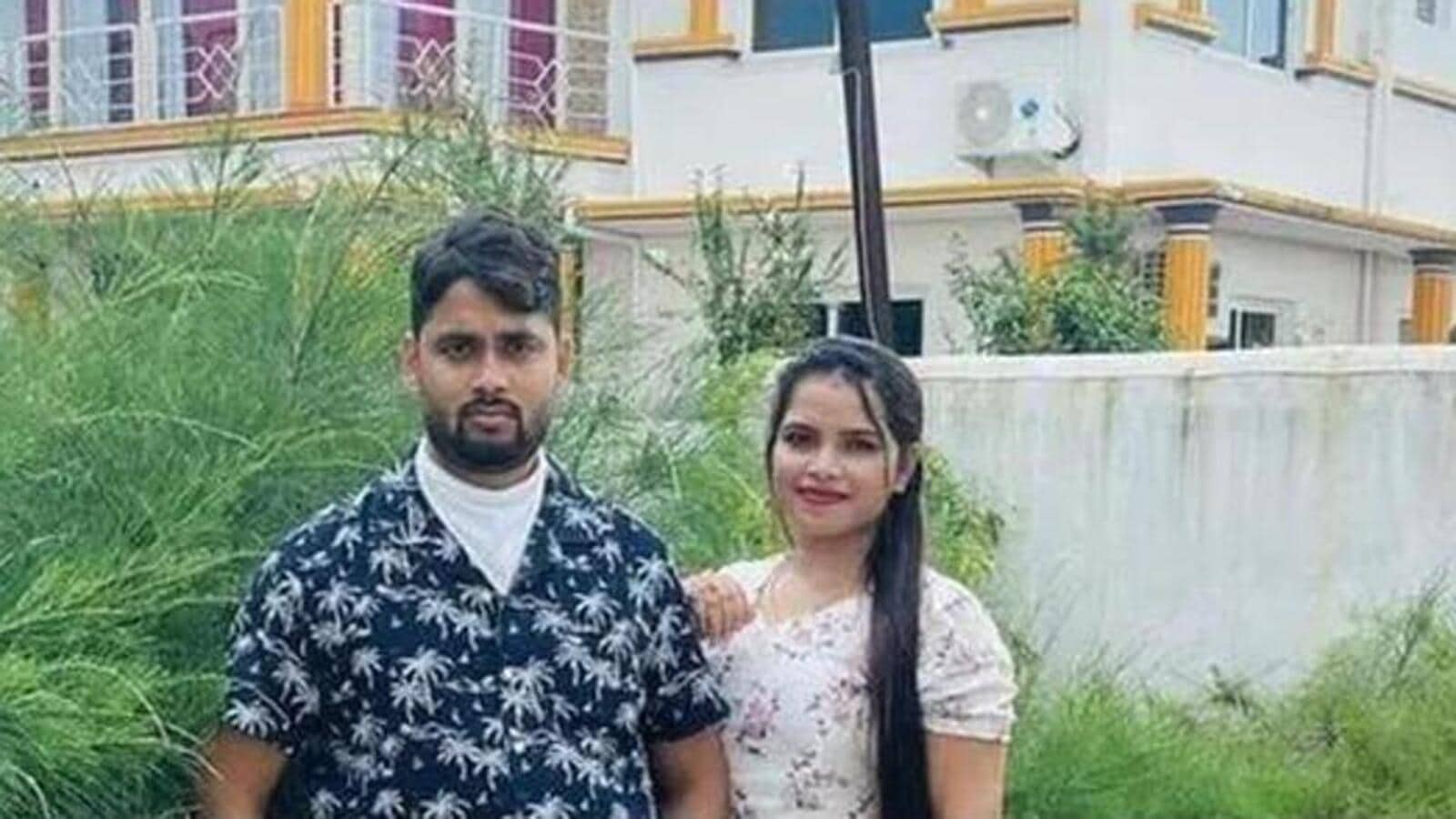Hey there, fellow internet explorer! If you've stumbled upon this article, chances are you're curious about the Odisha MMS video viral phenomenon that's been making waves online. In today's digital age, viral content spreads faster than ever, and this particular incident has caught the attention of millions across the globe. So, let's dive right in and explore what's been happening with the Odisha MMS video viral trends, shall we?
Now, before we go any further, let me break it down for you. Viral videos are like the ultimate digital wildfire—once they catch on, they're nearly impossible to contain. The Odisha MMS video viral is no exception. It's been everywhere, from social media platforms to WhatsApp groups, sparking conversations and debates among users. This isn't just about a video; it's about understanding how information spreads in our interconnected world.
But here's the deal: while the buzz around the Odisha MMS video viral is fascinating, it also raises important questions about privacy, ethics, and the role of technology in shaping public discourse. So, buckle up because we're about to take a deep dive into the latest updates, trends, and everything in between. Let's get started!
Read also:Impactful Life Of Mackenzie Scott A Philanthropic Leaders Journey
Table of Contents
Background on Odisha MMS Video Viral
Latest Updates on the Viral Trend
Trends Shaping the Viral Phenomenon
Legal Implications and Actions
Read also:Minerva University A Paradigm Shift In Higher Education For 2025
Background on Odisha MMS Video Viral
Alright, let’s rewind a bit and set the stage. The Odisha MMS video viral first hit the internet like a storm, leaving everyone scratching their heads. It all started when a private video, reportedly filmed in Odisha, somehow made its way onto the internet and started spreading like wildfire. People were sharing it left and right, and before anyone knew it, the video had gone completely viral.
But how did this happen? Well, the internet is a strange place where anything can go viral if the conditions are right. In this case, the video tapped into a mix of curiosity, sensationalism, and the human tendency to share juicy content. And let’s be real—once something gets shared on WhatsApp or social media, stopping it is like trying to put toothpaste back in the tube. Nearly impossible.
How the Video Spread
So, here's the deal: the Odisha MMS video didn't just magically appear everywhere. It followed a specific pattern. First, it was shared in closed WhatsApp groups, where people forwarded it like crazy. Then, it made its way to social media platforms like Facebook, Instagram, and even Twitter. Before long, it was everywhere, and people were talking about it non-stop.
And let’s not forget the role of influencers and content creators. Some of them jumped on the bandwagon, creating commentary videos or memes related to the incident. This only fueled the fire and kept the conversation alive for weeks, if not months.
Latest Updates on the Viral Trend
Now that we’ve covered the backstory, let’s bring it up to date. As of the latest reports, authorities in Odisha are actively investigating the matter. They’ve launched a crackdown on the circulation of the video and are working to identify those responsible for its initial leak. Several arrests have been made, and legal proceedings are underway.
But here’s the kicker: despite the efforts to stop the spread, the video continues to circulate in various forms. People have been sharing edited versions, screenshots, and even memes, making it nearly impossible to completely erase from the internet. It’s like a game of whack-a-mole—whenever one version gets taken down, another pops up somewhere else.
Authorities' Response
So, what’s the government doing about all this? Well, they’ve issued strict guidelines to internet service providers and social media platforms to monitor and remove any content related to the Odisha MMS video. They’ve also launched awareness campaigns to educate the public about the dangers of sharing such content and the legal consequences that come with it.
But let’s be honest—getting people to stop sharing viral content is easier said than done. In a world where clicks and likes are the ultimate currency, many users prioritize engagement over ethics. This creates a challenging situation for authorities trying to maintain order in the digital space.
Trends Shaping the Viral Phenomenon
Now, let’s talk about the broader trends that have contributed to the Odisha MMS video viral phenomenon. First and foremost, we’re living in an era where information travels faster than ever before. Social media platforms, messaging apps, and other digital tools have made it incredibly easy for people to share content with just a few taps on their screens.
Another trend worth mentioning is the growing appetite for sensational content. People love drama, and anything that sparks controversy or curiosity is bound to go viral. This is why videos like the one from Odisha have such a massive impact—they tap into our innate desire to know more, even if it means invading someone’s privacy.
Why Do Viral Videos Spread So Quickly?
Here’s the thing: viral videos spread so quickly because they’re designed to grab attention. They often come with catchy headlines, intriguing thumbnails, or shocking content that compels people to share them. And once someone shares it, the domino effect kicks in, and the video spreads like wildfire.
Also, let’s not underestimate the power of algorithms. Platforms like Facebook and Instagram use sophisticated algorithms to show users content that’s most likely to engage them. If a video starts gaining traction, the algorithm will push it to more people, ensuring that it reaches a wider audience.
What’s Causing the Spread?
So, what’s really driving the spread of the Odisha MMS video? While there are many factors at play, a few stand out. First, there’s the issue of privacy. Many people don’t fully understand the implications of sharing private content online. They might think it’s harmless to forward a video to a friend, but in reality, it can have serious consequences for the people involved.
Second, there’s the role of misinformation. In many cases, people share content without verifying its authenticity. They see a headline or a thumbnail and assume it’s true, only to later realize that the content is misleading or even fake. This lack of critical thinking contributes to the rapid spread of viral content.
Breaking Down the Causes
Here’s a quick breakdown of the main causes:
- Privacy Issues: People often underestimate the impact of sharing private content.
- Misinformation: False or misleading information spreads quickly when people don’t verify the facts.
- Algorithmic Bias: Social media platforms prioritize content that generates engagement, even if it’s controversial.
- Social Pressure: Many people feel compelled to share viral content to stay relevant or fit in with their social circles.
The Impact on Society
Now, let’s talk about the bigger picture. The Odisha MMS video viral has had a significant impact on society, both in India and beyond. On one hand, it’s sparked important conversations about privacy, consent, and the ethical use of technology. On the other hand, it’s highlighted the darker side of viral content and the damage it can cause.
For the individuals involved, the impact can be devastating. Once something goes viral, it’s nearly impossible to erase from the internet. This can lead to long-term consequences, such as damage to reputation, mental health issues, and even legal problems. It’s a harsh reminder of the power and pitfalls of the digital age.
Addressing the Social Impact
So, what can we do to mitigate the negative effects of viral content? Education is key. We need to teach people about the importance of privacy, consent, and responsible sharing. Schools, workplaces, and community organizations can play a role in raising awareness and promoting digital literacy.
Additionally, tech companies need to step up and take responsibility for the content that spreads on their platforms. They can implement better moderation tools, improve their algorithms, and work closely with law enforcement to combat the spread of harmful content.
Legal Implications and Actions
Let’s not forget about the legal side of things. The Odisha MMS video viral has raised serious questions about the legality of sharing private content without consent. In many jurisdictions, this is considered a violation of privacy and can result in criminal charges. Authorities in India are taking this matter very seriously, and several individuals have already been charged in connection with the incident.
But here’s the tricky part: enforcing these laws can be challenging, especially when the content is shared across borders. International cooperation is essential to tackle the global nature of viral content and ensure that justice is served for all parties involved.
What Are the Legal Consequences?
Here’s a rundown of the potential legal consequences:
- Privacy Violations: Sharing private content without consent can lead to criminal charges.
- Cybercrime Laws: Many countries have laws in place to combat the spread of harmful content.
- Civil Suits: Victims can file lawsuits against those responsible for the leak.
How to Prevent Future Virals
Now that we’ve explored the causes and consequences of viral content, let’s talk about prevention. How can we stop incidents like the Odisha MMS video viral from happening in the future? The answer lies in a combination of education, technology, and policy.
First, we need to educate people about the risks of sharing private content online. This includes teaching them about privacy settings, consent, and the potential consequences of their actions. Second, tech companies can develop better tools to detect and remove harmful content before it spreads. Finally, governments can enact stricter laws and regulations to hold individuals and organizations accountable for their actions.
Steps to Take
Here’s what you can do to prevent future virals:
- Think Before You Share: Always consider the impact of sharing content, especially if it involves private or sensitive information.
- Use Privacy Settings: Make sure your social media accounts are set to private and only share content with trusted individuals.
- Report Harmful Content: If you come across content that violates privacy or promotes hate, report it to the platform immediately.
Social Media's Role
Let’s not forget the role of social media in all of this. Platforms like Facebook, Instagram, and Twitter have a massive influence on how information spreads online. While they provide incredible opportunities for connection and communication, they also have a responsibility to ensure that their platforms are used responsibly.
Many social media companies are already taking steps to combat the spread of harmful content. They’re investing in AI-powered moderation tools, hiring more human moderators, and collaborating with experts to develop best practices. However, there’s still a long way to go, and ongoing efforts are needed to make the internet a safer place for everyone.
What More Can Be Done?
Here are some additional steps social media platforms can take:
- Improve Moderation: Develop more advanced tools to detect and remove harmful content.
- Partner with Experts: Collaborate with privacy advocates and legal experts to develop better policies.
- Engage with Users: Educate users about the importance of responsible sharing and the impact of their actions.
Privacy Concerns
Finally, let’s talk about privacy. In a world where everything is shared online, protecting our privacy has never been more important. The Odisha MMS video viral is a stark reminder of the dangers of sharing private content without consent. It’s a wake-up call for all of us to be more mindful of how we use technology and the information we share.
Privacy isn’t just about protecting ourselves; it’s about respecting the privacy of others. Whether it’s a friend, a family member, or a stranger, we all deserve the right to control our own information. By promoting a culture of respect and responsibility, we can create a safer, more ethical digital world for everyone.
Conclusion and Next Steps
Alright, that’s a wrap! We’ve covered a lot of ground today, from the background of the Odisha MMS video viral


